What is a Lead Magnet? A Guide for Digital Marketers
A lead magnet is an irresistible bribe offered to prospects in exchange for their contact information. The goal of a lead magnet is to get as many targeted leads as possible from a specific offer.
There are many different types of lead magnets you can create, but all of them must be perceived by prospects to be highly valuable, otherwise they won't be effective in helping you generate leads.
Read the rest of this guide to discover more about how you can use this powerful means of capturing new leads for your business.
What is a Lead Magnet?
A lead magnet is a marketing term for any free product or service that is given away for the express purpose of gathering a prospect's contact details.
This can be absolutely anything that the prospect finds valuable and it often works best if it's something that is instantly accessible.
You can choose from many different types of lead magnets (some of which we’ll look at later on). The image below shows an example of a lead magnet offering templates for Facebook Ads.
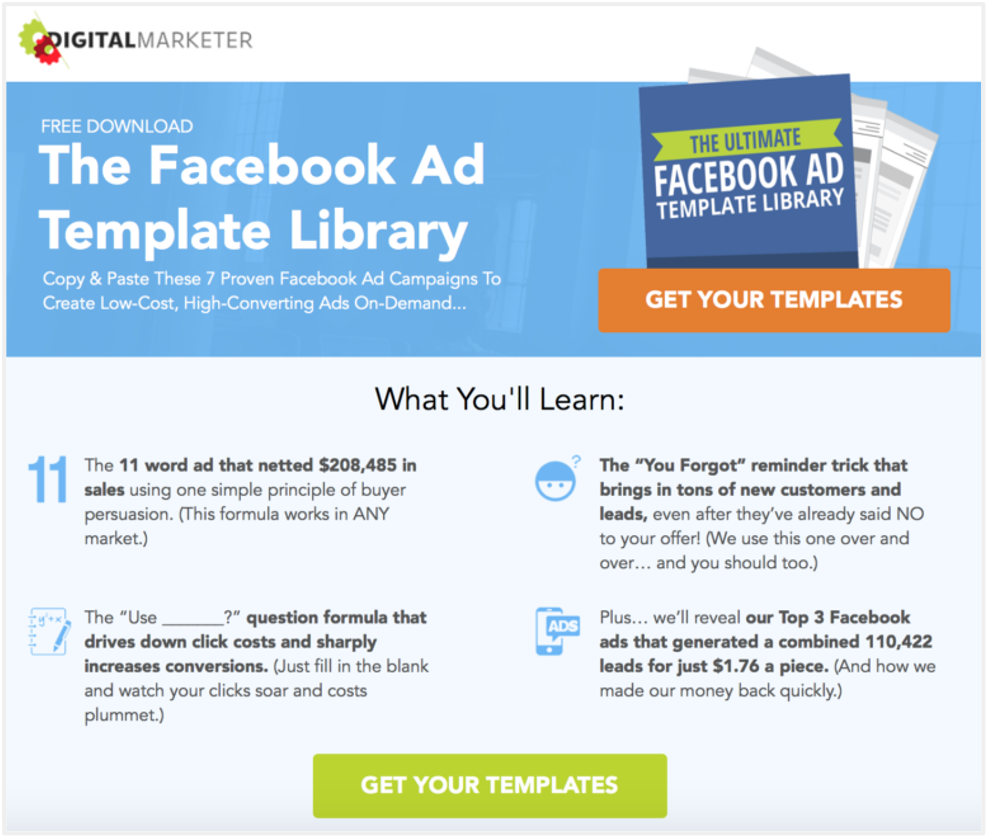
It's important to note that the type of lead magnet you use sets the tone for the relationship that will develop between you and the lead.
This means that the usefulness of your lead magnet doesn't end when prospects hit "subscribe", but rather it marks the start of your ongoing relationship with your subscriber.
Check out this article on creating a compelling lead magnet if you need help.
Examples of Lead Magnets for Different Platforms
Lead magnets come in many forms and are known by many different names, including ethical bribes, freemiums, content upgrades, free gifts like personalized company merchandise, and more.
Below, we take a look at some popular examples of lead magnets that can be used on distinct platforms as parts of successful digital marketing campaigns.
Example #1: Guide/Report
Guides and reports are some of the most commonly used types of lead magnets you’ll find. Just be careful to be extremely specific when using these types of lead magnets so you can ensure that your offer is targeted at the right people.
Example #2: Resource List/Toolkit
Toolkits and resource lists make great lead magnets for relevant businesses and markets. You can deliver these types of lead magnets as a template, starter kit, or even a glossary of resources or things your potential subscribers need to know. Example #3: Cheat Sheet
Cheat sheets are other types of lead magnets that work extremely well. They are generally short and have a different “feel” to them compared to reports or guides.
You can create a simple one-page cheat sheet that readers will find valuable in helping them find a quicker way to achieve their objective. The cheat sheet can be delivered as a checklist or blueprint.
Here’s an example of a lead magnet in the form of a cheat sheet:
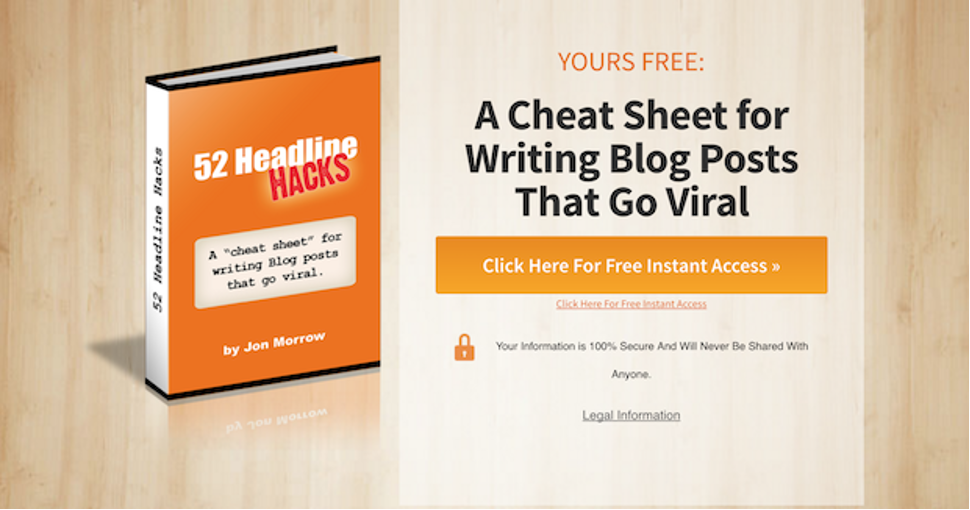
Example #4: Free Trial/Software Download
Software companies typically offer a free trial of their product so users can test drive the platform’s core features.
This is a very effective lead magnet that involves simply asking visitors to opt-in in order to start a free trial. If they like the software, they can easily upgrade at the end of the trial.
Example #5: Discount/Free Shipping
For anyone selling physical products (whether on or off-line), offering discounts or free shipping is a great way to gather leads. Many eCommerce shops generate customers through the use of an offer of free overnight shipping. Penn Tool Co is an example of a company that follows this strategy by offering a 5% discount to website visitors who join their community. Similarly, many top brands like Walmart and Easyjet offer discount coupons to their subscribers.
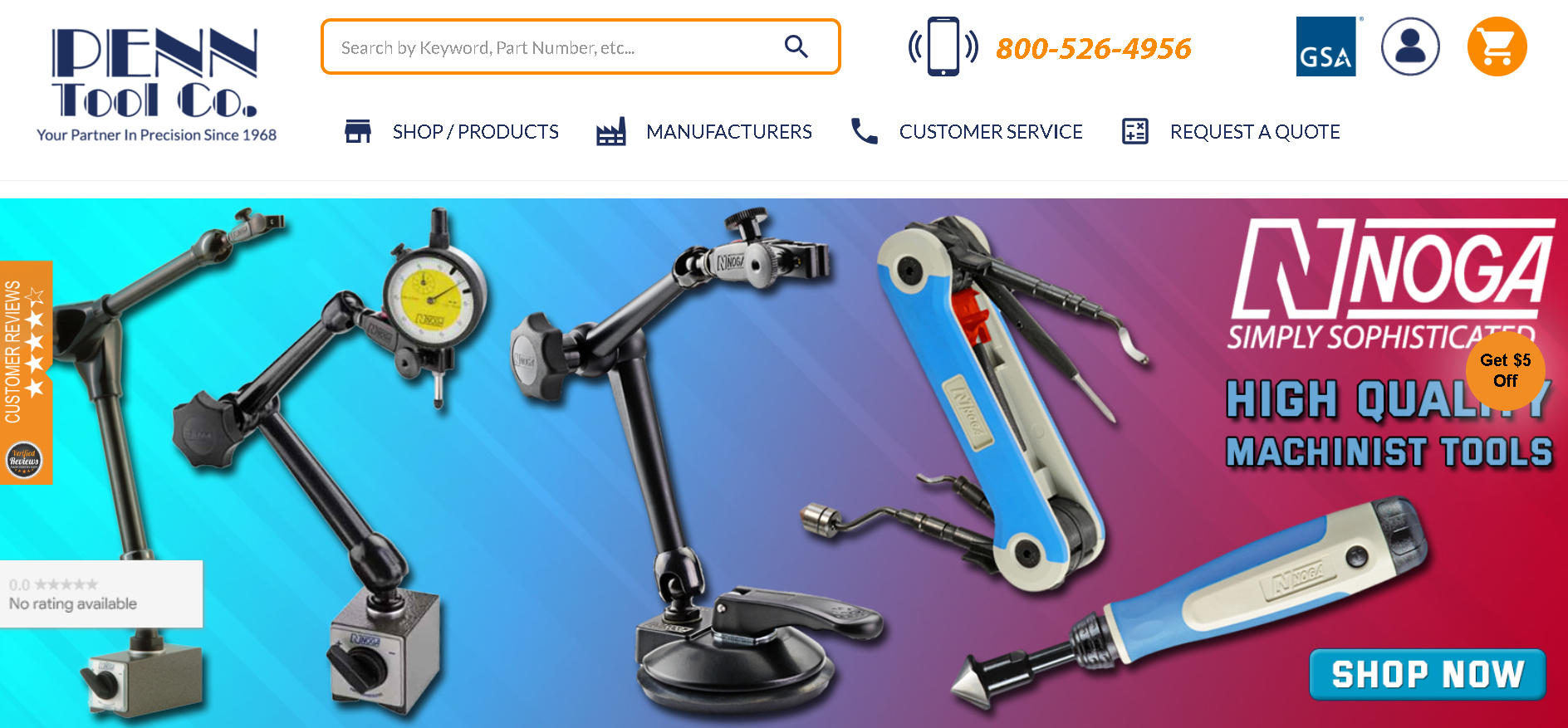
Example #6: Engaging Video Content
Video can be yet another effective way to generate leads online, and you don’t even have to have any video production or editing skills. While you can create video content to include within lead magnets, you can also buy short PLR courses that are relevant to your brand and its culture. These are often inexpensive and can be easily modified to serve your unique lead generation needs.
Example #7: Quiz/Survey
An online survey or quiz is an engaging way to deliver on your lead magnet. Simply use a tool like Survey Monkey , Zonka Feedback, WordPress Quiz plugin or a quiz-building tool like Interact, Jotform Quiz Maker to create a short and fun quiz that’s relevant to your target audience. Additionally, you can use online quiz maker software to create fun and engaging quizzes.
Once they complete the survey, participants must enter their email addresses in order to get the results in their inbox.
You can also use a website builder that integrates with email marketing software and third-party survey providers so that users can easily complete the survey on your site and then immediately receive an automated email with their results.
Within the email, you can use the email as a lead magnet with funnel points toward digital or physical items that leads might purchase based on the result so the survey, highlight discounts, announce promotions, and much more.
Here’s an example of a simple quiz on the homepage of a popular beauty brand:

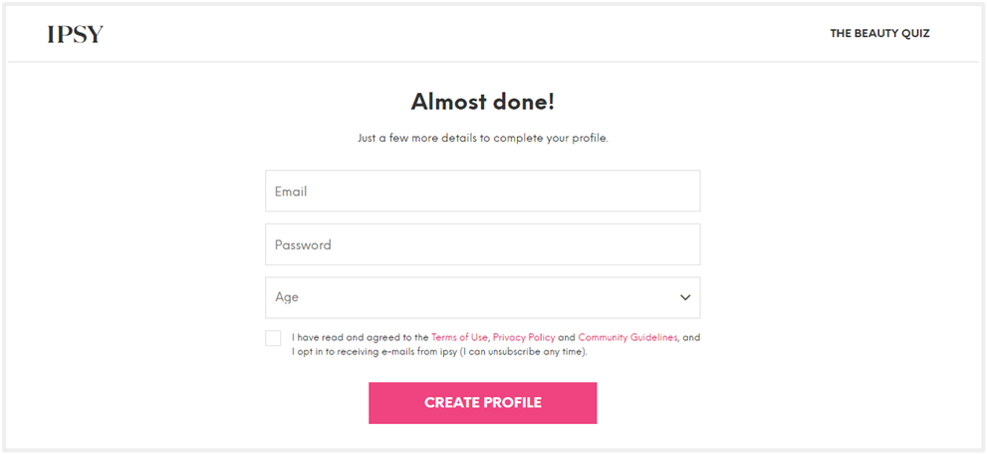
Challenges Associated with Using Lead Magnets Effectively
Creating lead magnets doesn't have to be a lengthy, complex, or time-intensive process. In fact, lengthier lead magnets often convert poorly compared to shorter ones.
And, as you’ve seen from the examples above, there are many types of lead magnets to choose from. In fact, choosing which lead magnet to create is the easy part.
There are, however, some challenges when it comes to the successful use of lead magnets, some of which we look at below.
Challenge #1: Lack of Specificity: This is one of the top reasons why so many lead magnets are ineffective. Regardless of the type of lead magnet you create, the most important rule is that it must be super specific to your target customer. It needs to have a specific solution to a specific problem experienced by a specific segment of your audience.
Challenge #2: Not Valuable Enough: Just because a lead magnet is free doesn’t mean it should look or feel free. Both the perceived and actual value of the lead magnet must be high if you want to get conversions. If it only has high perceived value, but no actual value, you’ll get a lot of opt-ins, but no engagement afterwards, so make sure you add real value and use high-quality content and visuals.
Challenge #3: Getting Traffic to the Offer: Most lead magnets fail because marketers fail to get enough traffic to them. However, there’s no shortage of traffic online if you know where to look. Sites like Google, Facebook, Instagram, and LinkedIn will send as much targeted traffic to your offer as you want as long as you use them effectively. If you use Linkedin, take advantage of the Linkedin connector and else.
Challenge #4: Confusing Privacy Policies: Often when a user visits your website, you have to get permission to use cookies. At the same time, when getting a user to sign up for your email newsletter, you need to ensure they are voluntarily consenting to share the personal data collected. When privacy policies are overly confusing, complicated, or just difficult to sign, you may end up pushing potential leads away instead of drawing them in. Fortunately, there are many privacy policy generators that can help you create simple policies that won’t push away potential leads.
Best Practices for Using Lead Magnets
You now know the most popular lead magnet types, and the top challenges faced by marketers when using lead magnets in their campaigns. Let’s take a quick look at some best practices for using lead magnets effectively.
1. Be Super Specific
As previously stated, your lead magnet must be extremely specific for it to work effectively. Never create a lead magnet about something general as this will be a huge waste of time on your part.
If you can personalize your lead magnets to a single specific landing page, it will convert even better.
2. Offer One Big Thing
Your lead magnet can solve multiple problems, but you must only focus on offering one big thing so as not to confuse your potential subscribers.
Promise them one quick win (and deliver, of course). The easier you make it for them to achieve their objectives, the more likely they will be to convert.
Make sure your lead magnet clearly speaks to a known end result that your audience desires, as in this example below from One Hour Professor targeted at people who want to start a successful blog.
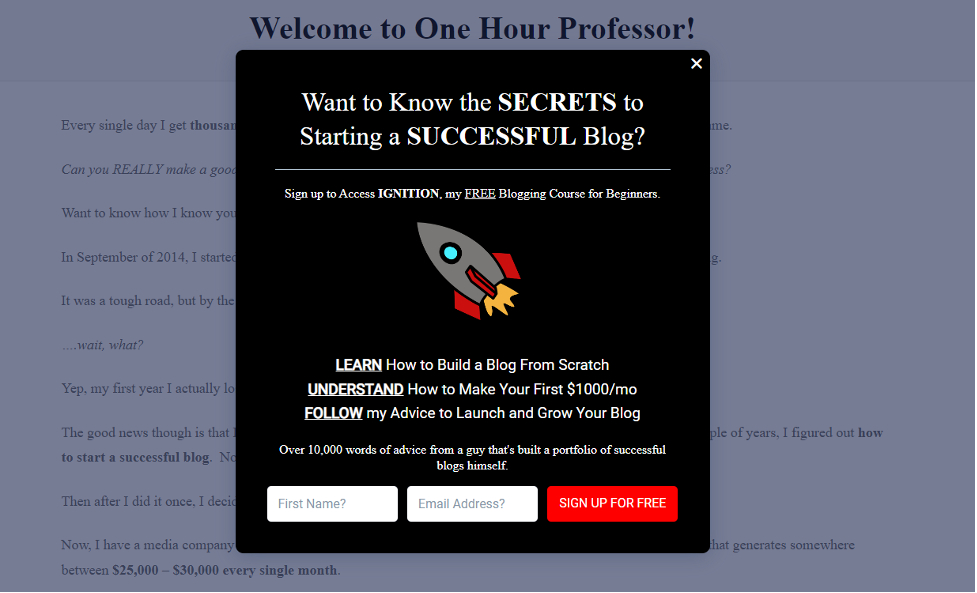
If you can figure out exactly what prospects want and offer it to them, they will gladly exchange their contact details for that information.
3. Ask Relevant Questions
Another important element of successful lead magnets is to only ask relevant questions on the subscription form.
If your forms have too many fields to fill, they'll likely experience a drop in conversions. Only ask for information that is absolutely necessary, such as an email and name. If you need additional information, you can collect it afterwards.
4. Offer Immediate Gratification
This is an important one. You must avoid using multi-day courses and newsletters as a lead magnet. Although you may be able to get some sign-ups, these don't work as effectively as other lead magnets mentioned here.
Remember, your audience wants a solution to their pain points, and they want it now.
5. Rapid Consumption
Additionally, your lead magnet must be quick to consume and digest. So, rather than offering an eBook or lengthy report, you might consider creating a PDF checklist or something similar that is short and easy to read so you don't leave your prospects feeling overwhelmed.
Conclusion
There you have it. 7 examples of effective lead magnets proven to bring results, and 5 best practices to follow when creating your own lead magnet.
You also know the challenges marketers usually face when creating lead magnets and how you can overcome them.
Use this information to help you integrate lead magnets as core parts of your lead generation strategy to increase your conversions dramatically.
Are you ready to boost conversions with these effective lead generation tips? Share your thoughts below!
BYLINE:
Ron Stefanski is an online entrepreneur, marketing professor, and founder of OneHourProfessor.com, which helps over 75,000 people each month create and grow their own online business.







